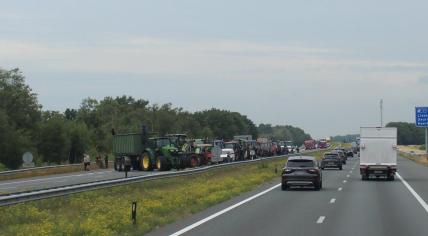
Agriculture sector's nitrogen targets could be lower: Finance Ministry
If the Netherlands achieves its climate targets, farmers will have to reduce their nitrogen emissions much less than previously thought, NRC reports based on calculations from the Ministry of Finance. Reducing greenhouse gas emissions will also reduce nitrogen emissions. And the bonus nitrogen gains from the climate policy weren’t included in the nitrogen plans, according to the newspaper.
In June, the Cabinet presented a map showing how much nitrogen emissions need to decrease per region to ensure that three-quarters of nitrogen-sensitive nature areas are healthy again by 2030. Some provinces need to cut emissions by half. Regions around nature reserves must cut emissions by 95 percent.
But the nitrogen gain from achieving climate targets - reducing greenhouse gas emissions by 55 percent by 2030, compared to 1990 - is not included in that map. The Cabinet only included the reduction already achieved, not the future profit. More electric driving, closing coal-fired power stations, and factories reducing their CO2 emissions will also lead to considerably fewer nitrogen emissions.
At the last measurement, less than half of the nitrogen-sensitive nature areas in the Netherlands were below the critical deposition value - the limit of nitrogen considered healthy for nature. According to the Ministry of Finance’s new calculations, if the Netherlands’ achieves its climate targets, the percentage of healthy nature areas will grow significantly without any other nitrogen policy. That means the government can reduce the nitrogen targets for agriculture by 25 to 50 percent and still achieve 75 percent healthy nature areas by 2030, according to the newspaper.
An essential condition for this is that the Netherlands actually achieves its climate targets. At the end of 2021, the country was behind schedule.
The new calculations from the Ministry of Finance are a boost for farmers, who have been protesting for weeks because they believe the nitrogen plans are too harsh on them. According to them, the government focuses too much on farmers and too little on other sectors emitting nitrogen. According to research agency TNO, about 60 percent of the Netherlands’ nitrogen emissions are from agriculture.
In the Cabinet’s defense on this point, farmers were largely spared in the other climate measures. In the 2019 Climate Agreement, energy supply and industry were given the biggest challenges, with agriculture’s contribution being much smaller.
